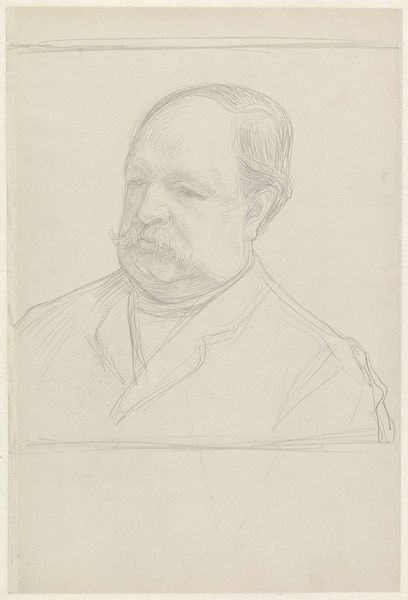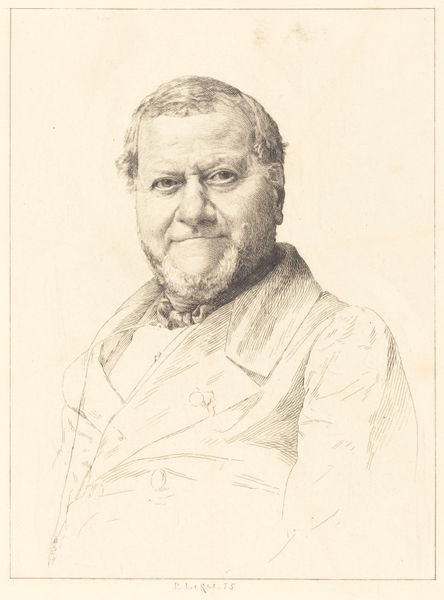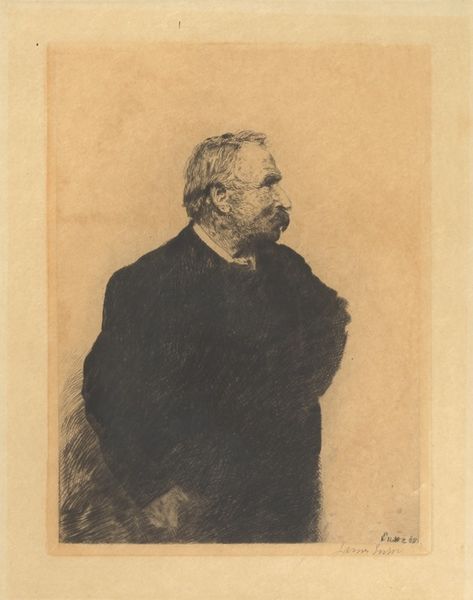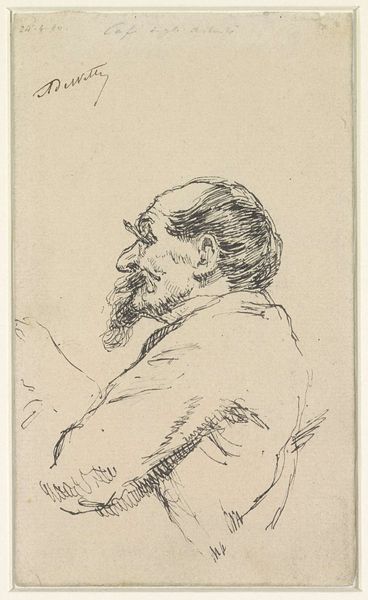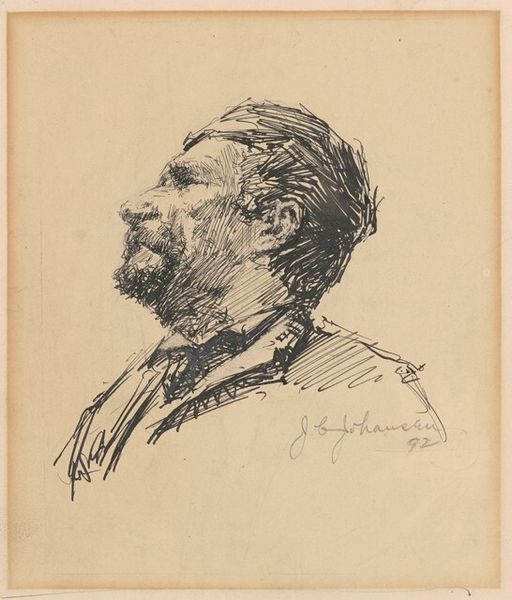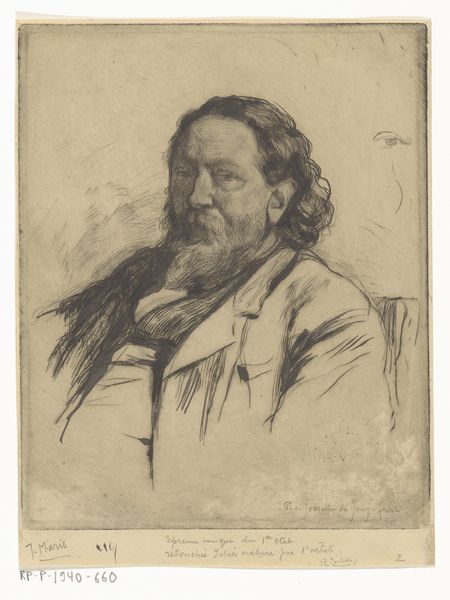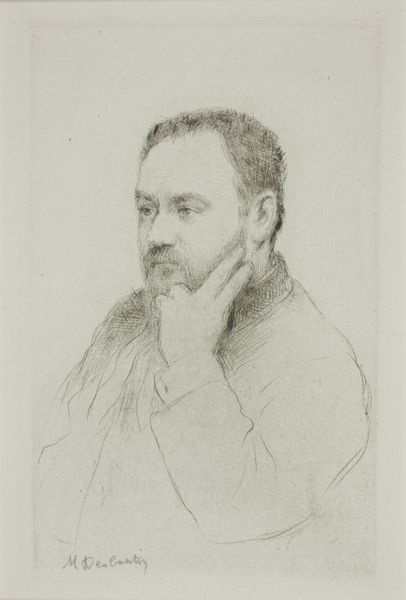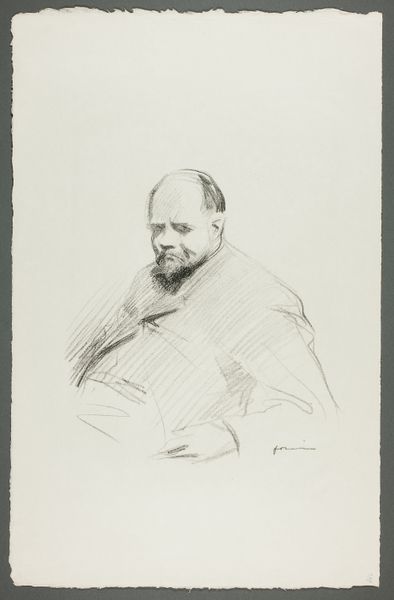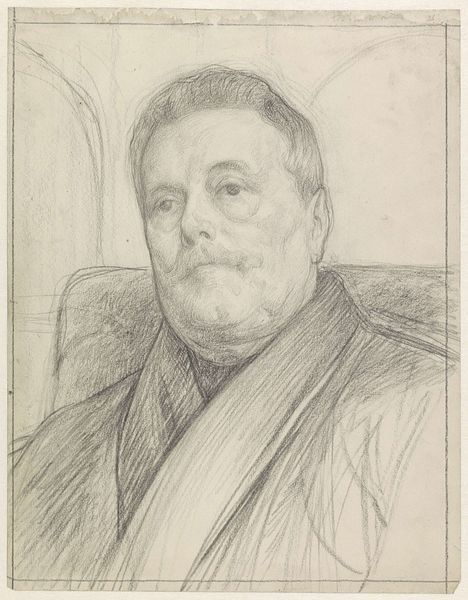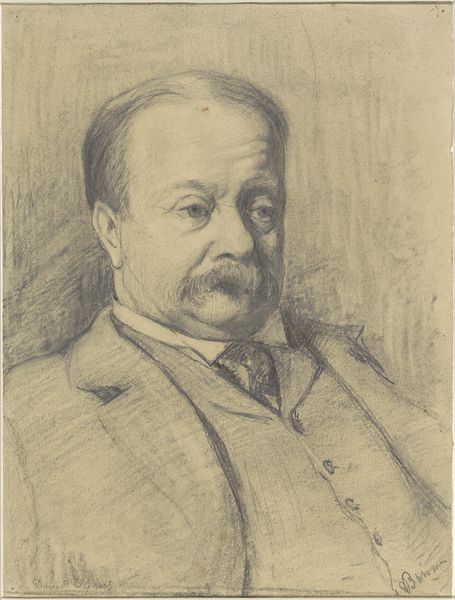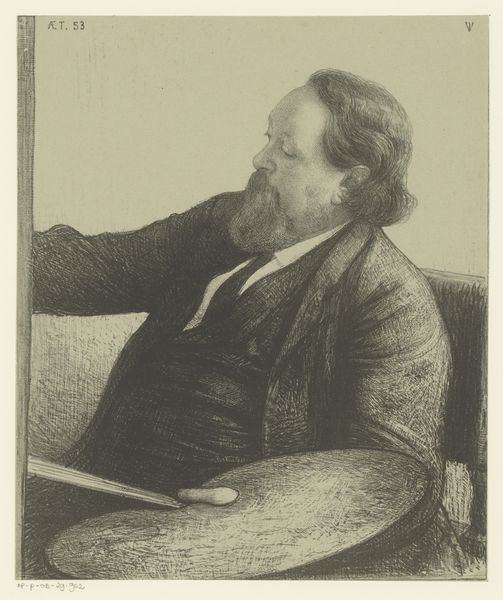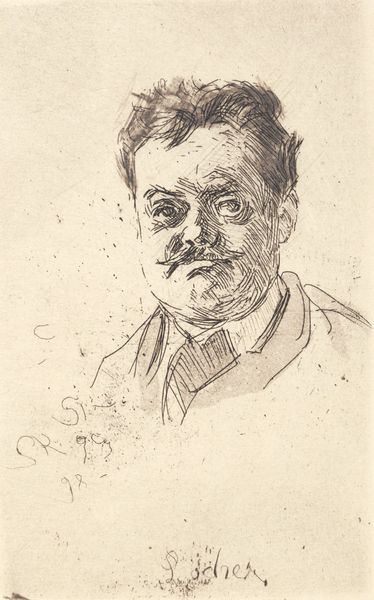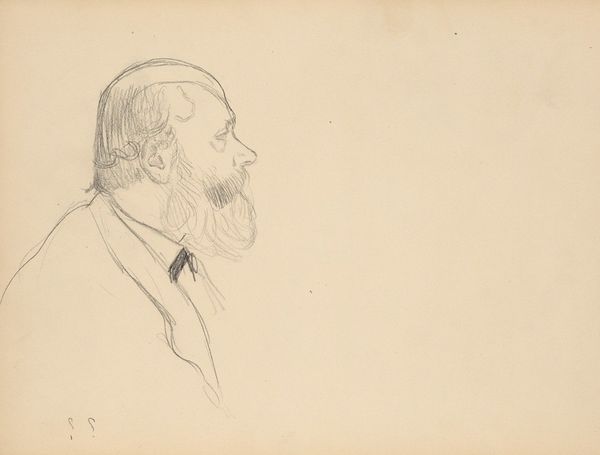
drawing, paper, graphite
#
portrait
#
drawing
#
self-portrait
#
paper
#
pencil drawing
#
graphite
#
portrait drawing
#
modernism
Dimensions: 180 × 103 mm
Copyright: Public Domain
Editor: Here we have Anders Zorn's "Study" from around 1900, rendered in graphite on paper. It looks like a self-portrait. I’m struck by how immediate and raw it feels, almost like a quick sketch capturing a fleeting moment. What do you make of this work? Curator: The immediacy you mention speaks volumes about the function of drawings like these. While seemingly simple in their materials – graphite and paper – their real value lies in documenting the artist’s process and labor. Consider the social context: Zorn was a celebrity artist. Was this "Study" created as a form of branding? An authentic look into his creative world for patrons to later covet? Editor: Branding, that's an interesting point! So, even the perceived "raw" quality might have been a carefully crafted image. Curator: Precisely! Think about the labor involved, too. Graphite was becoming increasingly accessible due to industrial production. This self-portrait democratizes the means of artistic production. It whispers, “You too can create,” even if the market simultaneously elevates Zorn to a level of celebrity unattainable by most. The commodification of the “artist’s hand” is at play here, isn’t it? Editor: That tension between accessibility and exclusivity makes a lot of sense. I hadn’t considered how the very materials contributed to that paradox. It gives a new perspective to portrait drawings like these! Curator: Absolutely! By analyzing the means of production, materiality, and its social context, we can see beyond the image and start asking difficult questions.
Comments
No comments
Be the first to comment and join the conversation on the ultimate creative platform.
